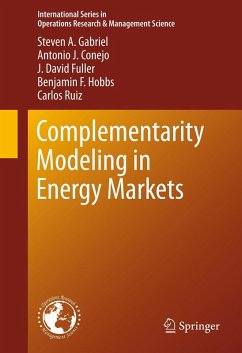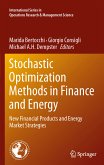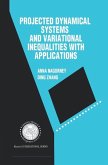A natural question is why concentrate on energy markets for this complementarity approach? As it turns out, energy or other markets that have game theoretic aspects are best modeled by complementarity problems. The reason is that the traditional perfect competition approach no longer applies due to deregulation and restructuring of these markets and thus the corresponding optimization problems may no longer hold. Also, in some instances it is important in the original model formulation to involve both primal variables (e.g., production) as well as dual variables (e.g., market prices) for public and private sector energy planning. Traditional optimization problems can not directly handle this mixing of primal and dual variables but complementarity models can and this makes them all that more effective for decision-makers.
Dieser Download kann aus rechtlichen Gründen nur mit Rechnungsadresse in A, B, BG, CY, CZ, D, DK, EW, E, FIN, F, GR, HR, H, IRL, I, LT, L, LR, M, NL, PL, P, R, S, SLO, SK ausgeliefert werden.
"This book is to address the topic of complementarity modeling to make these modeling approaches widely accessible to a larger audience. ... I strongly recommend it for energy practitioners and researchers in energy market modeling ... . I am convinced that they are a fruitful and challenging area of research, which will serve as a guide to real-world applications. Therefore, I strongly recommend this book to all modelers in energy systems and markets." (Dominik Möst, Interfaces, Vol. 43 (6), November-December, 2013)
"This monograph represents the first comprehensive overview of electricity, environmental, and natural gas market models through the use of complementarity techniques. ... it provides a wonderful set of examples that are crucial in conveying the material. ... this monograph represents an indispensable and enduring resource for any serious researcher in energy markets." (Uday V. Shanbhag, Mathematical Reviews, October, 2013)









